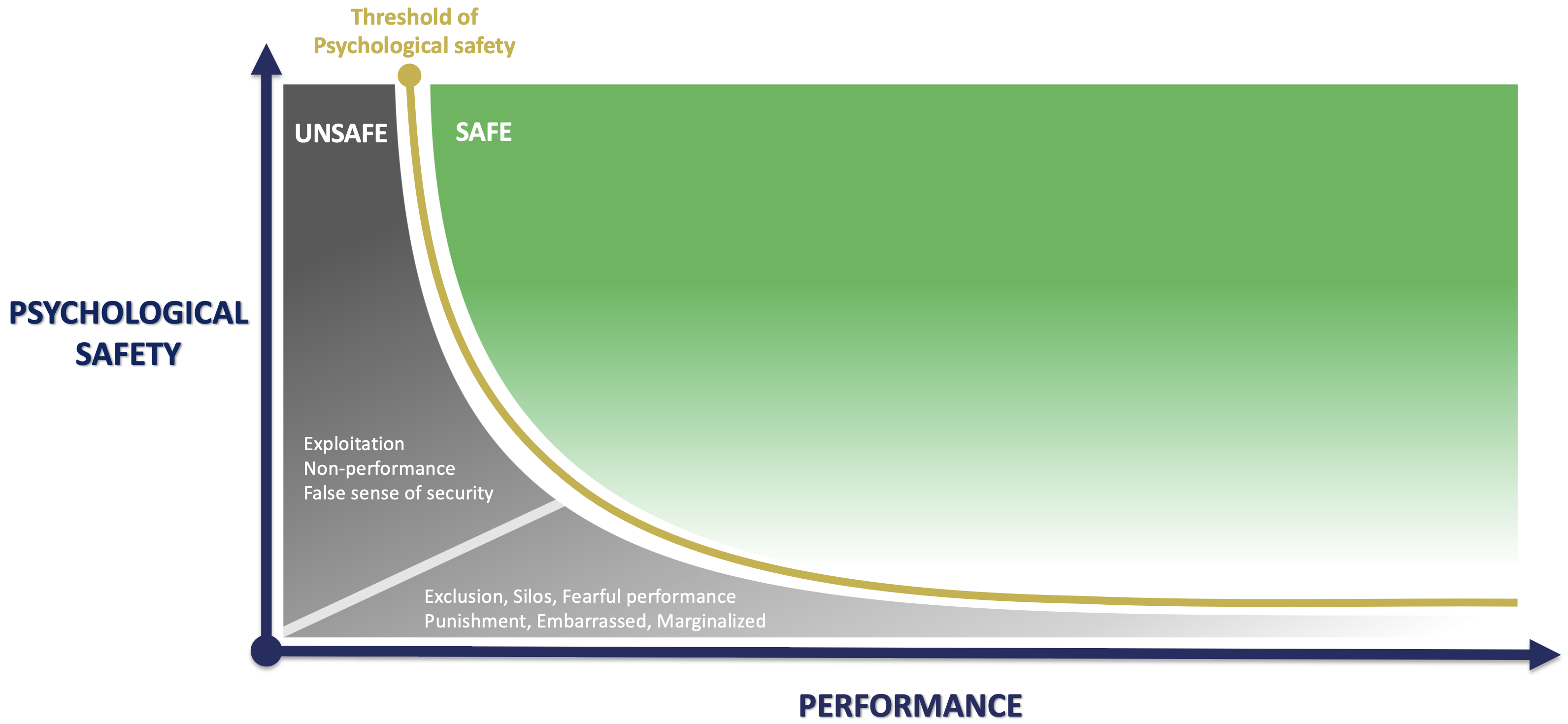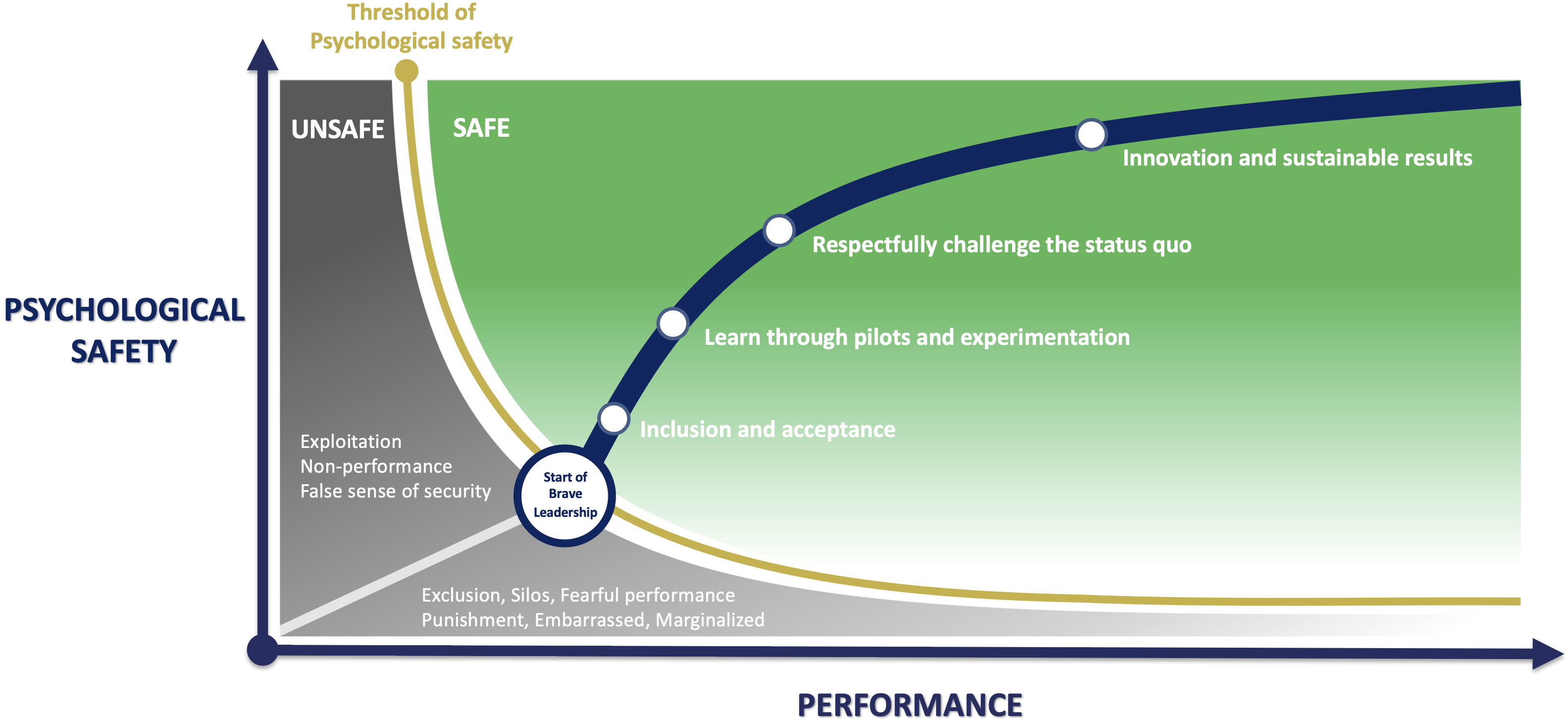Semco Style practically equips leaders with a framework to lead, manage and inspire distributed teams and create an employee friendly culture characterized by psychological safety.
In our recent article Psychological Safety: Leading remote teams in a distributed world we outlined the history and importance of Psychological Safety as a primary focus for leaders of remote and distributed teams. It highlighted three concepts that are at the core of a psychologically safe work culture:
- Democracy advocating for inclusion, acceptance and respect.
- Common sense enabling learning and structured experimentation and safeguarding against negative effects or punishment.
- Aligned self-interest calling for active engagement (inclusion & respect) and seeking common ground on shared interests, dreams and objectives.
When these concepts form the foundation of the culture in the team, department or organization, fertile ground is created for Psychological Safety to flourish. Enhancing Psychological Safety is an active process that can be explained up in 5 steps and to make these steps practical, we will also explore some proven work practices from Semco Style. To guide us, we will use a graph of psychological safety vs. team performance.
The threshold of psychological safety
Psychological safety does not simply occur by itself, and there is at first a threshold to overcome. This Threshold of Psychological Safety separates the safe from the unsafe zone.
In the unsafe zone, there are two combinations of perceived Psychological Safety and Team Performance:
- Psychological Safety is high (or perceived as high) and Performance is low. In this instance a false sense of security exists and in reality, it is simply mutual exploitation. People feel comfortable and safe, perhaps because there are many friendships and lots of friendliness that hides non-performance. The rationale is “I am the manager and you are my friend, so I will not challenge you on performance,” or “I am friends with my manager, so I can get away with some non-performance or exploitation.”
- Psychological Safety is low and Performance is high. In this instance it is typically fearful performance and management that leads with a dictatorship style. It is characterized by punishment for non-performance and employees being marginalized or embarrassed. In this environment there are lots of silos and people are often excluded from various aspects of decision-making with little or no creativity.

STEP 1: Brave leadership
In order to bridge over from the unsafe to the safe zone, and start building Psychological Safety, the first and most crucial step is to make the decision to become a brave leader. A transformational journey towards Psychological Safety in your organization begins with leadership that believes in the concept and dares to make brave decisions.
Three proven work practices:
- Treating adults as adults. Employees should be treated like responsible adults rather than children who have to have everything spelled out for them. They do not need to be supervised in arbitrary and meaningless ways.
- Break down silos. Actively remove literal and figurative barriers between workers to encourage interaction.
- Ask the leaders. Host Q&A sessions between top management and employees to foster deeper connection and to bridge the power distance.
STEP 2: Inclusion and acceptance
The goal here is to become more transparent, inclusive and respectful of every person’s legitimate feelings and concerns. This will require the ability to show vulnerability and have some critical dilemma conversations. It is about finding common ground, shared interests, dreams and objectives.
Three proven work practices:
- Let us learn the numbers. Get employees to understand the performance of the organization by educating them on the key financial numbers and indicators.
- Check-in, check-out. Start meetings with a check–in to establish each individual’s mindset coming into the meeting, and end them with a check-out, to create focus on the task ahead.
- Having a dilemma conversation. Create the time and space for teams to enter into dilemma conversations that help them gain each other’s trust. To do that, they need to first get to know each deeply; openly share vulnerabilities and understand why they respond to certain situations in the way they do.
STEP 3: Learn through pilots and experimentation
Running pilots and experimenting with new ways of working is a structured approach to find innovative solutions to existing problems. When experiments are done right, small failures often provide new insight that advances the process and breaks through the current threshold of knowledge. Based on the results, it might become a new practice or at worst, there are some learnings on what does not work.
Three proven work practices:
- Creating the space for participation. Allow everyone in the organization, across levels, to be involved in the everyday decision-making processes.
- Let the ideas flow. Break down silos and encourage the free flow of ideas and creative problem-solving.
- Write, Erase and Rewrite Rules. Take decisions or formalize things today in a way that allows them to be changed tomorrow, if need be.
STEP 4: Respectfully challenge the status quo
Respect for every individual naturally includes respect for employees, customers, suppliers, the community, and society in general. Most people will say that to be respected is the most important thing they want from their employer. When people feel respected, they give far more than their hands – they give their minds and hearts as well. To respectfully challenge the status quo relates to a person’s ability to understand why things are the way they are by seeking input, listening and aiming to improve what is believed to be the best current way of doing something.
Three proven work practices:
- Stop and Reflect. Identify moments in meetings which require stop-and-reflect sessions to create learning opportunities.
- Meet, Track and Challenge. Schedule frequent meetings to encourage people to openly discuss issues, track progress, and overcome challenges they are facing.
- What went right and what didn’t. Use retrospective meetings to help employees reflect on their mistakes, be more creative and develop a constant learning mindset.
STEP 5: Innovation and sustainable results
When Psychological Safety has systematically increased, it will result in high performance for the team and the organization. It is extremely important to focus on sustaining the results achieved – not just of the mindsets and behaviors of people, but also of the performance achieved. High maturity levels of the people and the organization, demands innovation in order not to stagnate and to continuously stay ahead of the competition.
Three proven work practices:
- Information Belongs to Everybody. Open up all company information to employees of all levels to help them make decisions faster.
- Team Members Set Team Goals. Allow employees to participate in the process of goal setting to improve engagement and motivation.
- People Can Fix (It) Themselves. Allowing people to creatively solve their own problems, by facilitating innovation and by being trusting, patient and transparent.
When all 5 steps are combined in a structured approach, the result is the increase in Psychological Safety and reaching greater heights in Performance.

Unlock your potential as a leader and understand more detail on the levers of Psychological Safety in your team.
Check out our virtual program ‘Leading Remote Teams in a Distributed World’ where we will explore many more work practices that you can use to enhance your team. Alternatively, join our next upcoming (free) webinar around this topic.
